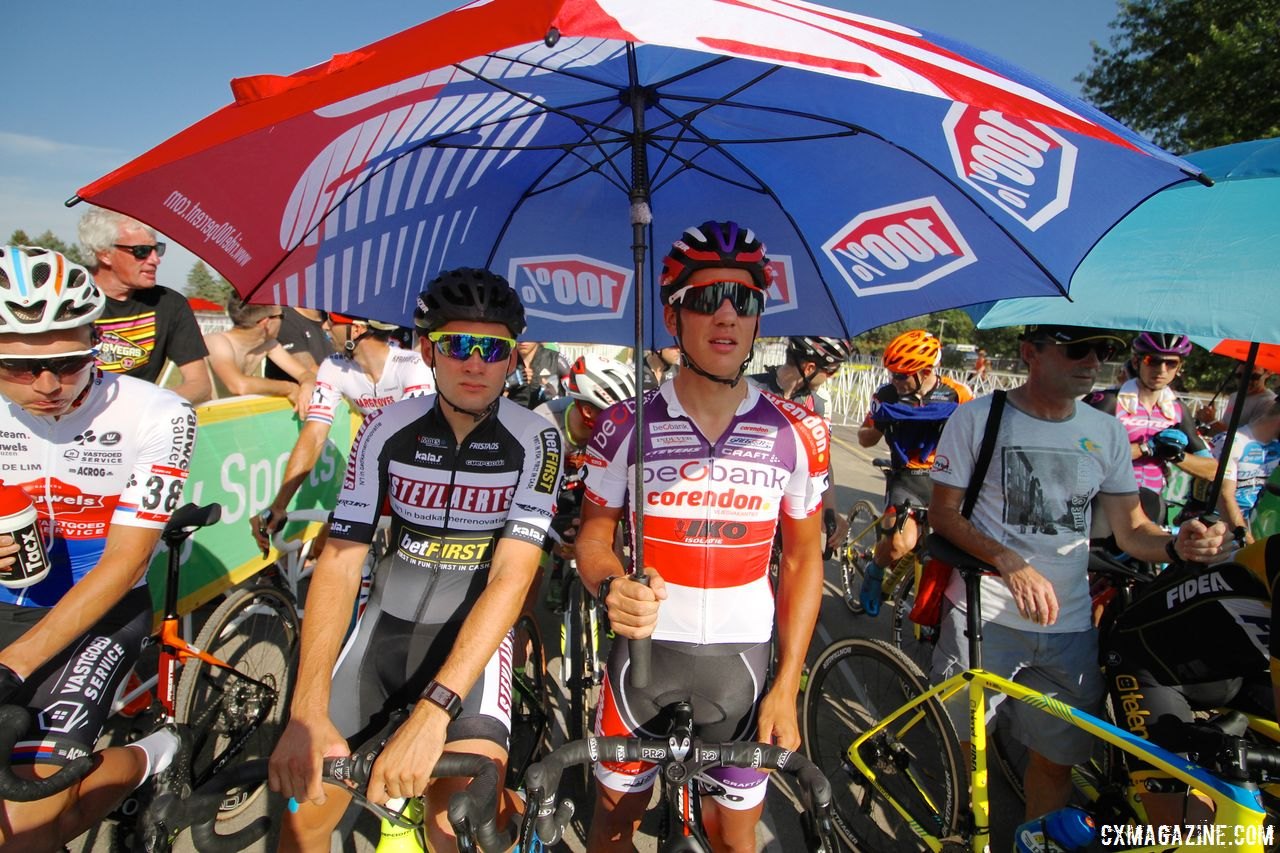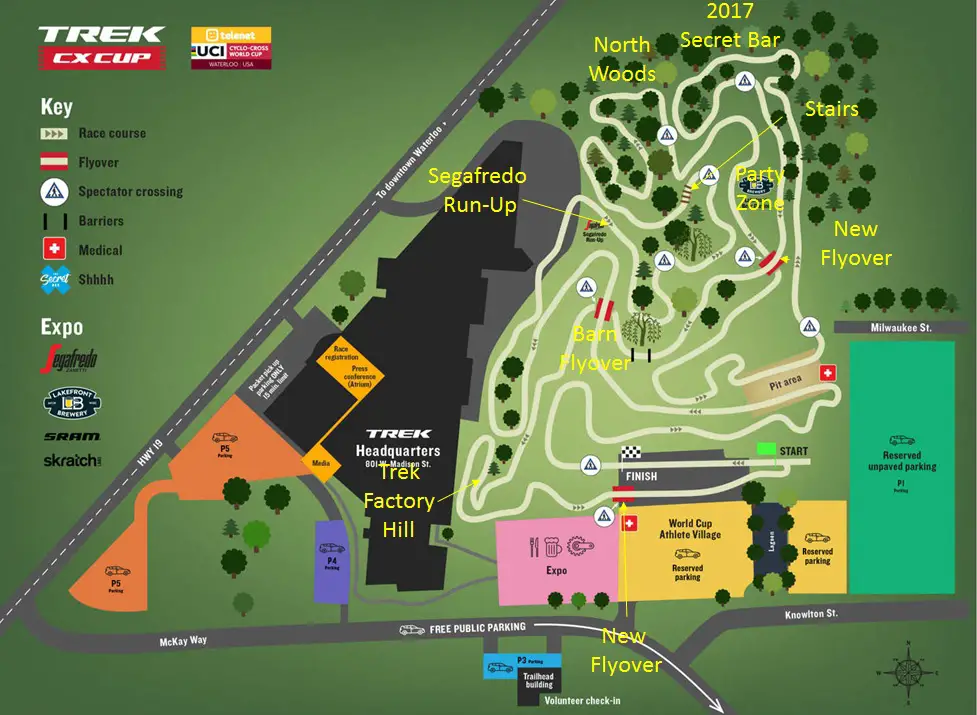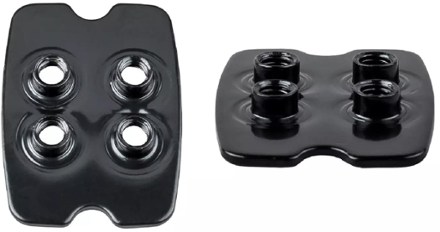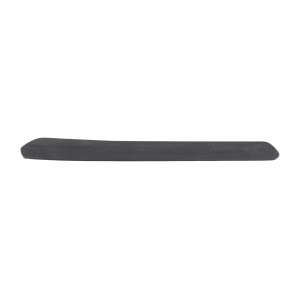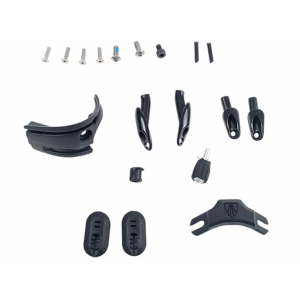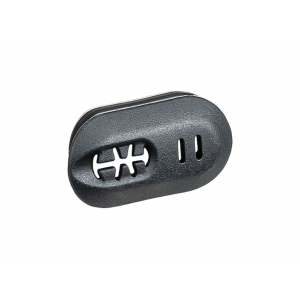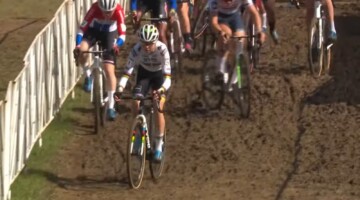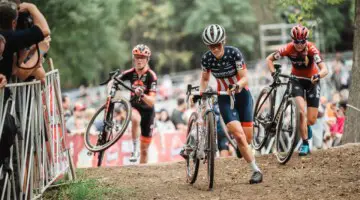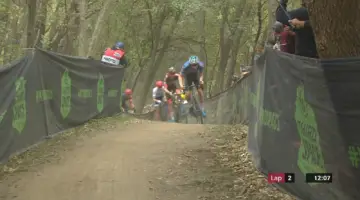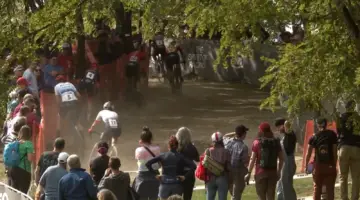The cyclocross venue at Trek Headquarters in Waterloo, Wisconsin has come a long way since it first hosted a UCI cyclocross race in 2013. Trek has bought surrounding land, used their trail crew to build features and even added a Wisconsin-appropriate flyover.
In 2017, the Trek cyclocross course made its debut at the sport’s highest level when it hosted World Cup Waterloo last September. World Cup Waterloo returns again in 2018, and so does the ’cross course the company has put together on its grounds.
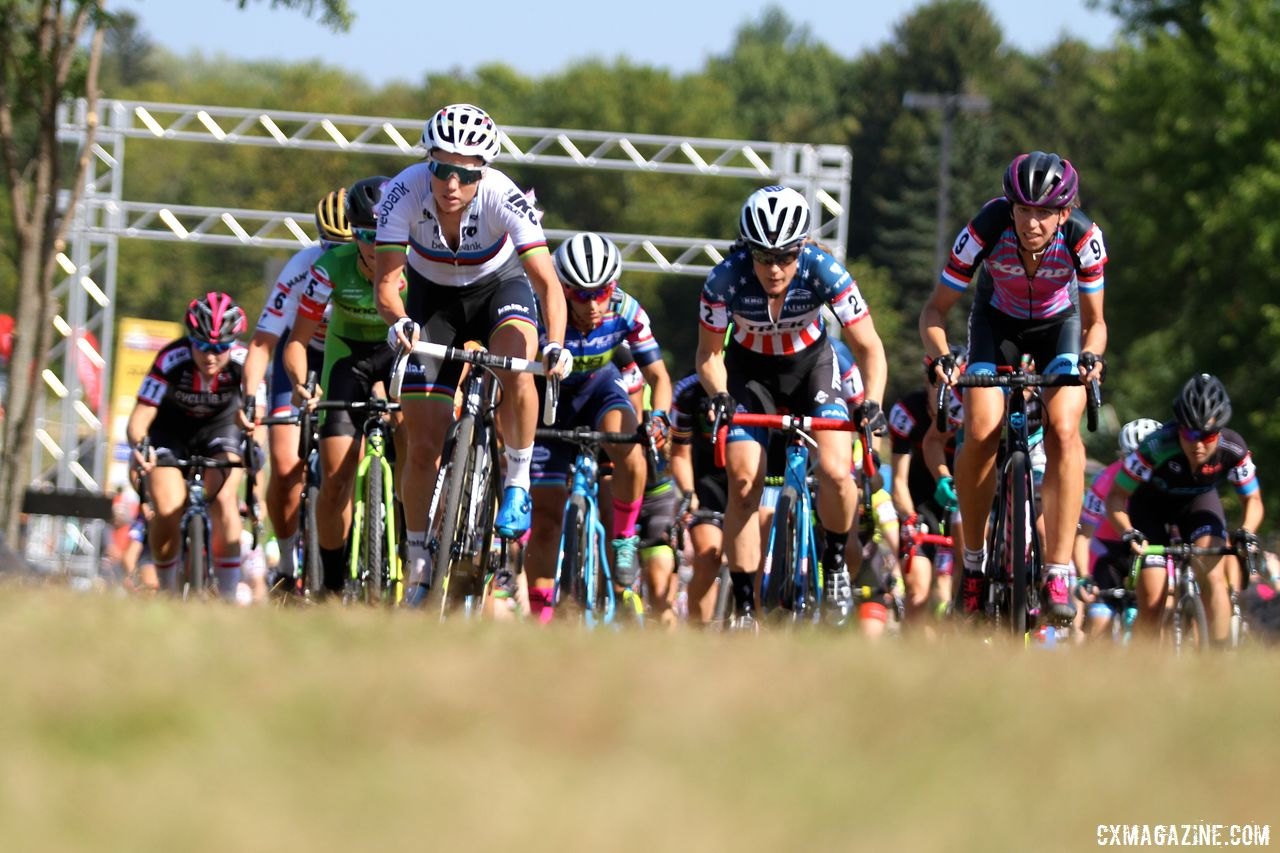
World Cup racing returns to Waterloo again in 2018. 2017 Trek CX Cup. © D. Mable / Cyclocross Magazine
By nearly all accounts, the first World Cup Waterloo held in 2017 was a success—save the blazing hot early-fall Midwest heat. The course was fun and fast and the Lakefront Legends race and Secret Bar helped make the event a good time for racers and fans alike.
Even with last year’s success, the Trek team has spent the last year working to make the 2018 edition of World Cup Waterloo even better. I recently headed out to Waterloo to look at the course and see how course designer Travis Braun and his team have changed things up in preparation for this year’s World Cup Waterloo.
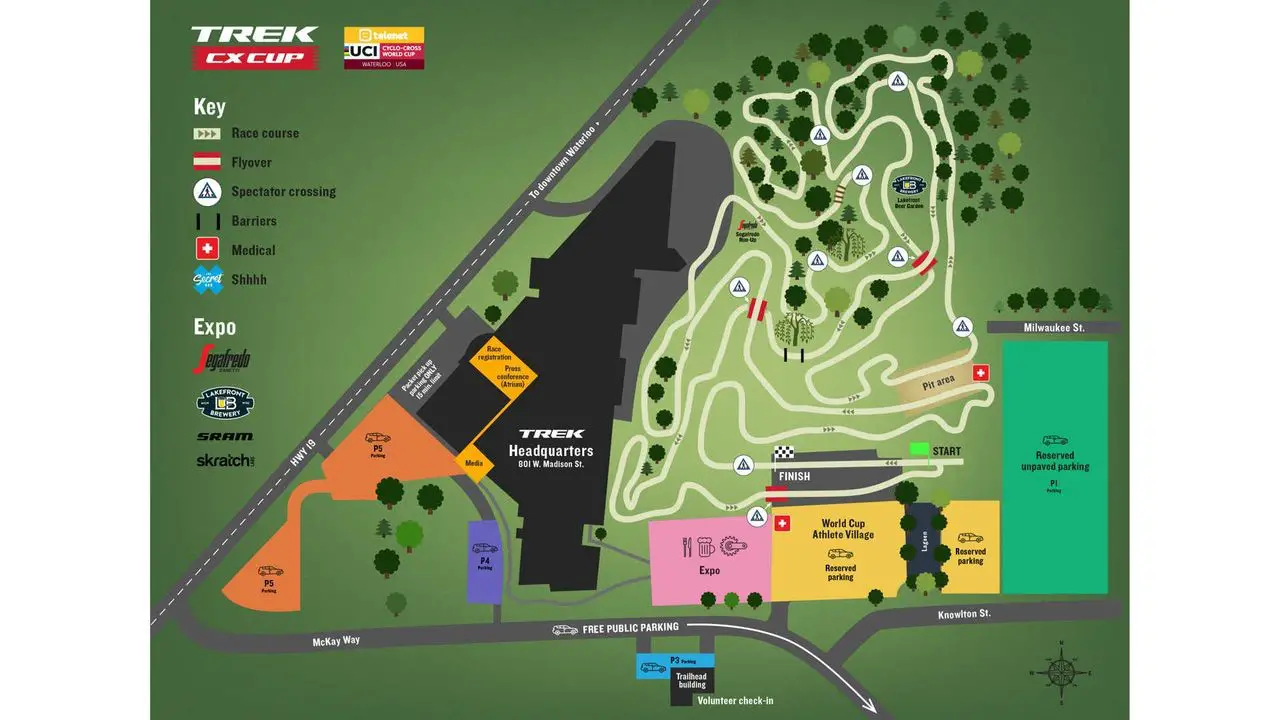
2018 World Cup Waterloo course map. photo: Trek Bicycle
Making Things Even Better
Trek Bicycle signed a two-year contract for World Cup Waterloo back in early 2017. With the event secured for two years, the Trek team had the opportunity to approach the race knowing they had two years to dial it in.
During our trek around the Trek course, Trek’s Andrew Rosch told me that after last year’s World Cup, the race team met in early October to debrief on how things went. One of the things they focused on was things they wanted to improve on.
To be fair, at the top of their list was cooling down the insanely hot temperatures that turned Waterloo into an early fall sauna. Not much anyone could do about that one except try to survive.
When putting on a cyclocross event like a World Cup, designing a course for good spectator flow is equally as important as making the actual track fun and challenging. With several thousand people gathered in a small area, making sure they can move around and get to the spectating spots they want is a must.
One thing Rosch focused on during our course walk was the start/finish area. Last year’s finish headed east from Trek Factory Hill before doing a Uey back to the finish. Spectators had to cross the course right before the finish to gain access to the rest of the course’s interior. Needless to say, the crossing was a little dangerous with riders screaming toward the finish and fans bottled up at the crossing.
This year, the course will go over the spectator crossing with a flyover.
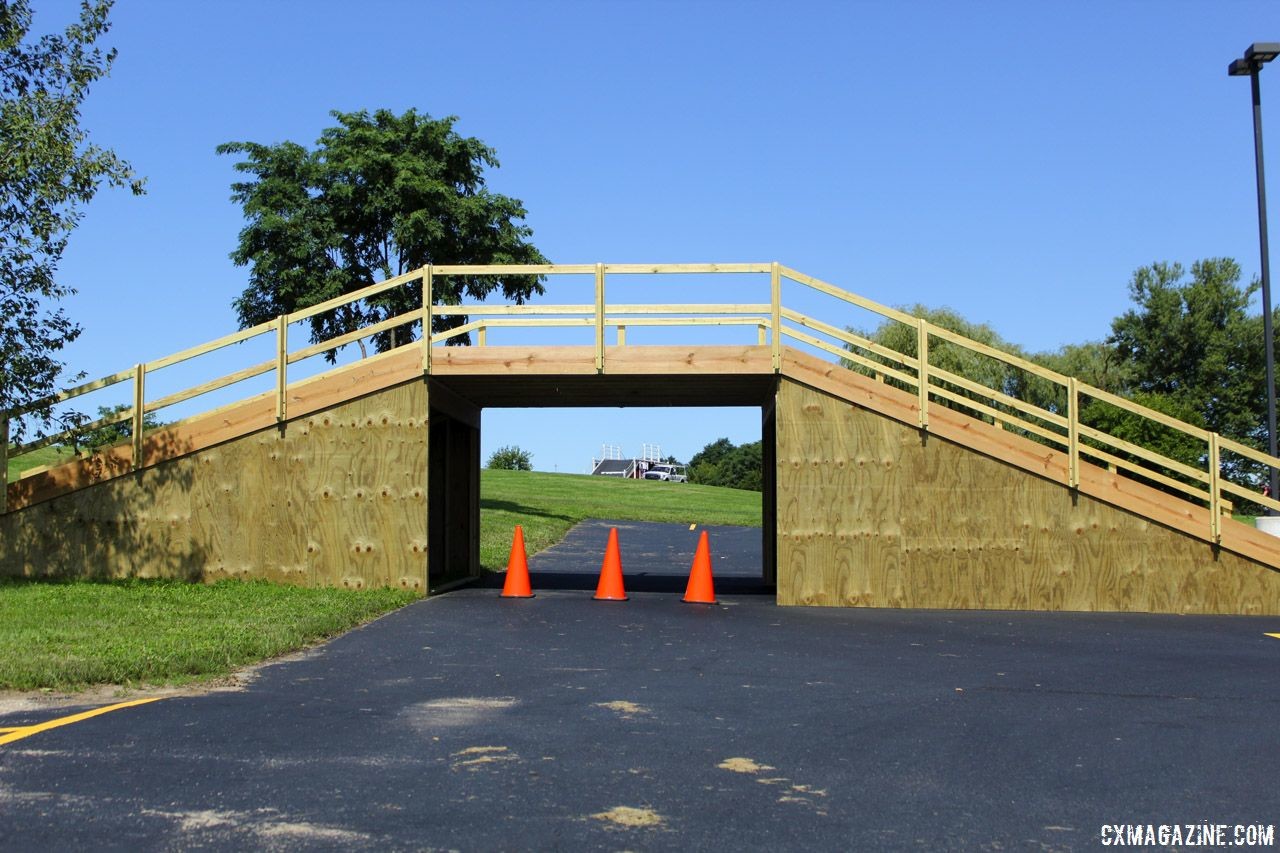
One of the new flyovers is located near the start/finish to facilitate smoother traffic flow. 2018 World Cup Waterloo Course Preview © Z. Schuster / Cyclocross Magazine
The start also got a recent makeover. Riders start by blasting down the Trek parking lot toward Trek Factory Hill before turning right and heading out onto the course. Last year, the start was a bit tight, and as we saw in the World Cup when Lars van der Haar (I think?) took a spill in the first turn and Mathieu van der Poel rode away from the field for the entire race, the crashes and slip-outs in the first corner were not ideal.
Trek remedied the start situation by adding more start.
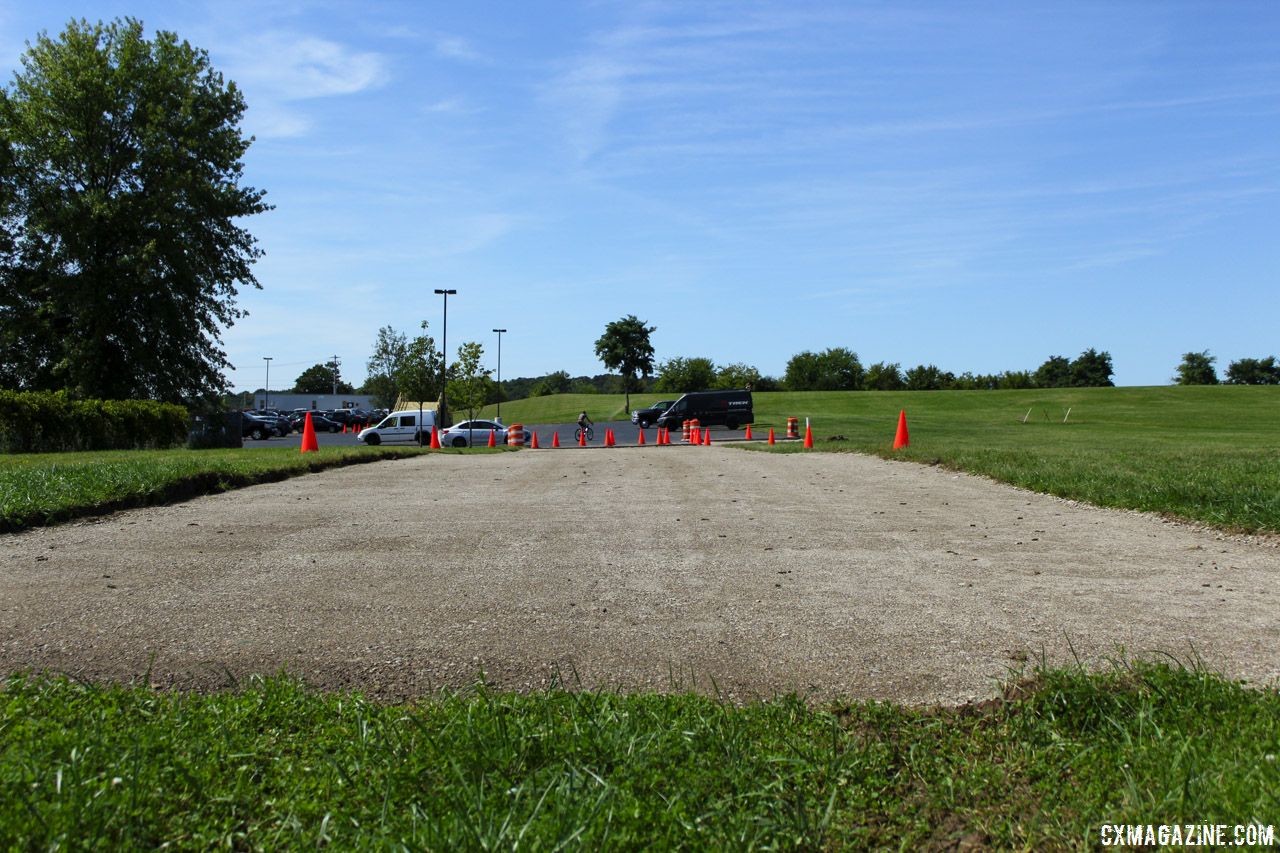
Trek added more start to the start area. 2018 World Cup Waterloo Course Preview © Z. Schuster / Cyclocross Magazine
When I was in Waterloo, a paving crew was laying fresh asphalt on an additional stretch of the start area built specifically for Trek’s cyclocross race.
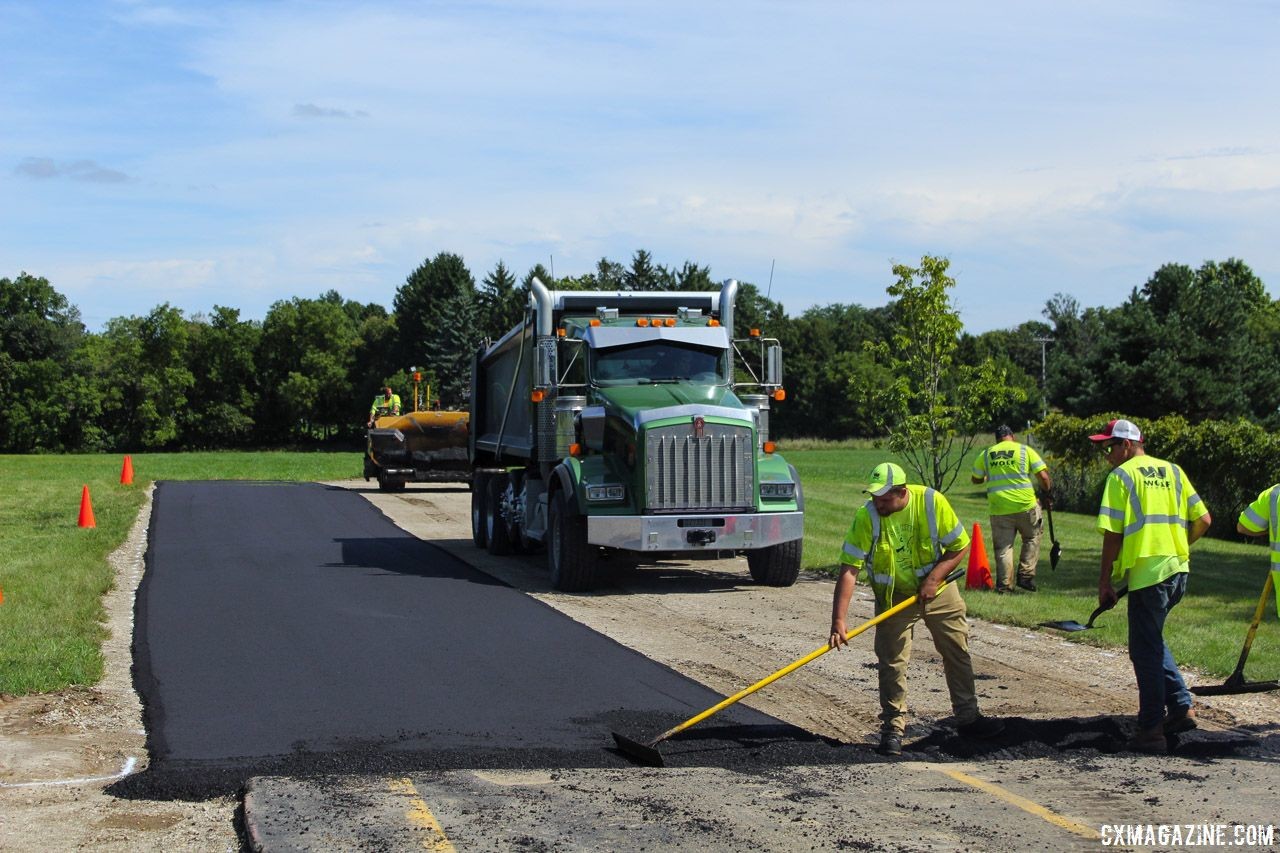
The start line extension got a fresh coat of asphalt last week. 2018 World Cup Waterloo Course Preview © Z. Schuster / Cyclocross Magazine
“We actually extended our start line this year so we could make the start a little less tight,” lead course designer Travis Braun said. “It was within regulations as far as the turn at the end, but I think someone slid out in most of the races trying to make that first turn. We’re trying to ease that a little bit and make it a little harder to have people screw up their races early on.”
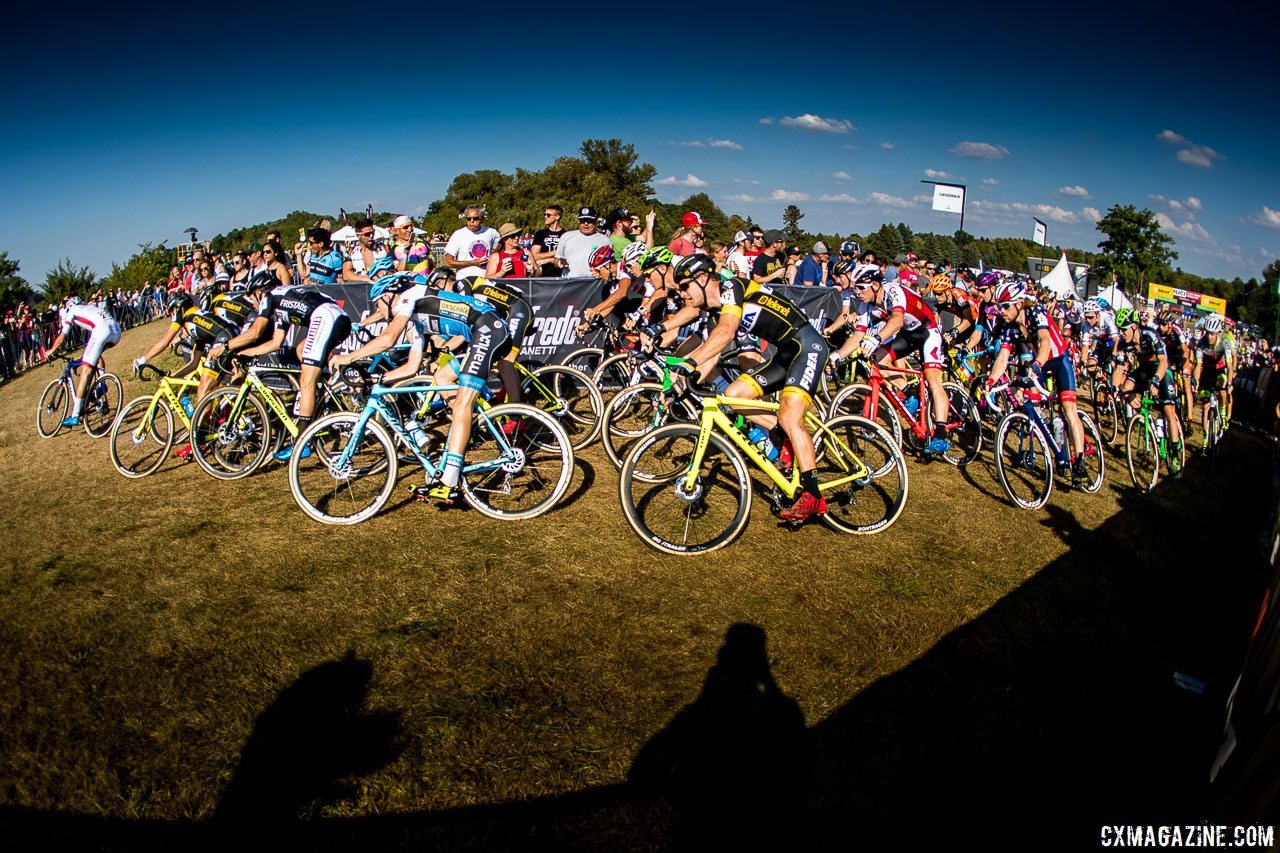
Last year’s start got kind of congested at the first turn. 2017 World Cup Waterloo © J. Curtes / Cyclocross Magazine
The final big change Trek made was based on feedback that the pit area was too bumpy. Prior to last year’s race, the area was largely cleared but not rolled, so pit exchanges were a challenge in the dry, dusty conditions. Both Helen Wyman and Katerina Nash had rough pit exchanges caused by the bumpy ground that affected their World Cup results.
The grounds crew remedied this for 2018 by rolling the entire pit area and seeding it with new grass. Pit exchanges should now be smoother and untimely bumps hopefully will not have a major impact on the races’ outcomes.
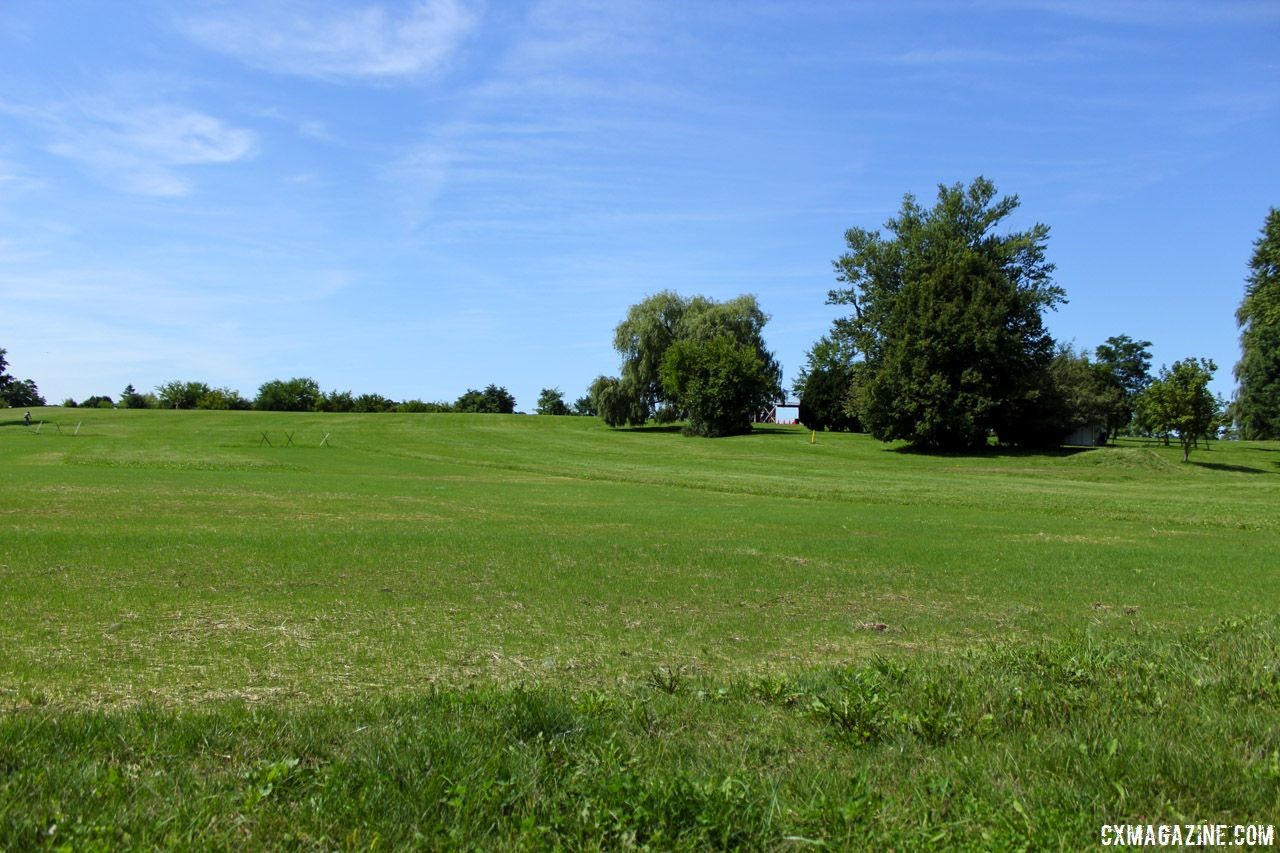
The grounds crew rolled and seeded the pit area to make bike exchanges smoother this year. 2018 World Cup Waterloo Course Preview © Z. Schuster / Cyclocross Magazine
What’s New for 2018
Earlier this summer, the Trek CX Cup social media team decided to try out course design by popular vote. The result? A trip to the lumber yard and more work.
Survey results are in. A few conclusions:
1. More = better.
2. Guess we're going to Home Depot (Depot dogs!).
3. 9% of you haven't had your @SegafredoUSA this morning.#CrossIsComing pic.twitter.com/CABoeyw87Q— Trek CX Cup (@TrekCXCup) August 6, 2018
The people have spoken and the result is moar flyovers.
The flyover first built in 2015 continues to stand tall on top of the Trek property’s main ridgeline. When I was out in Waterloo, the grounds crew was putting the finishing touches on the flyover’s very #onbrand Wisconsin paint scheme.
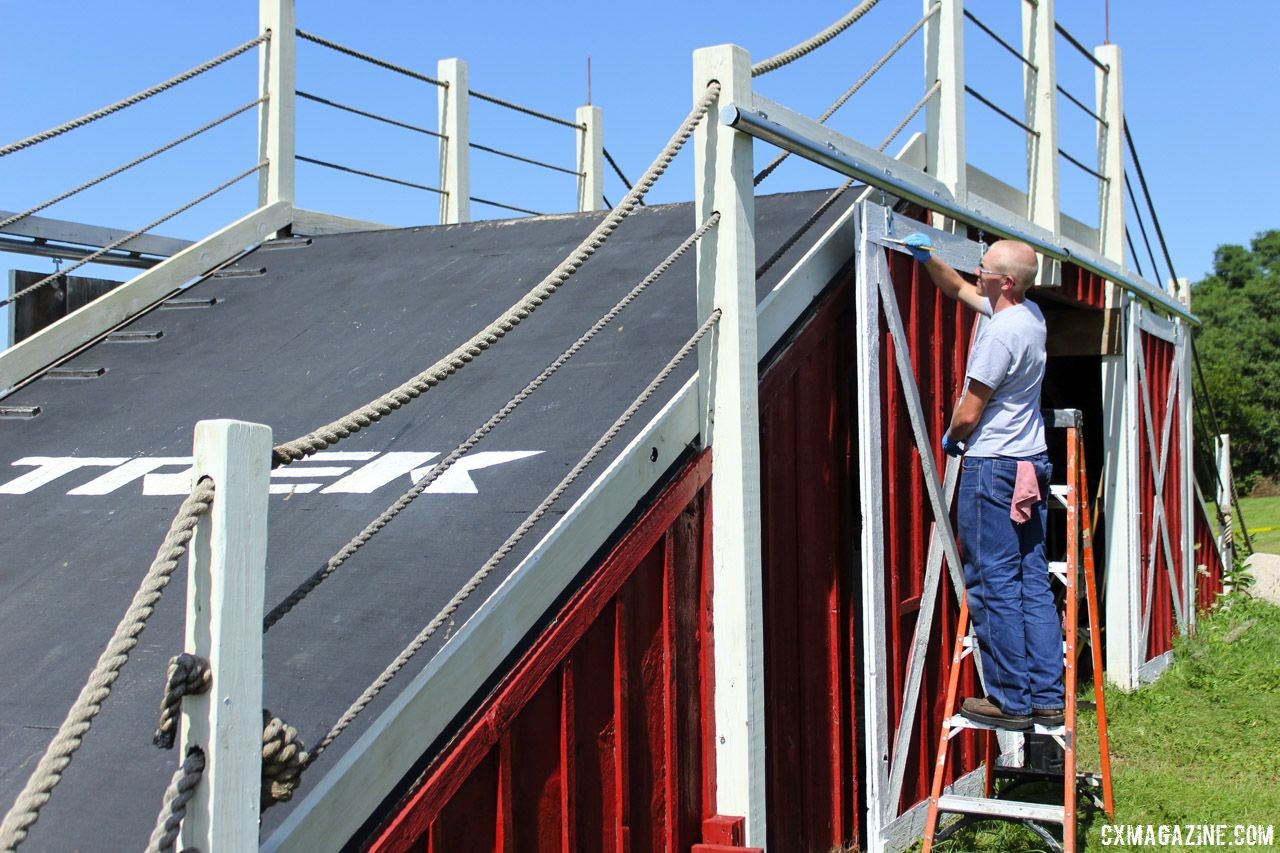
The first flyover on the Trek property is very #onbrand for Wisconsin. 2018 World Cup Waterloo Course Preview © Z. Schuster / Cyclocross Magazine
The course crossing flyover is the second of the two structures. Word from the Trek folk is it will have its own custom vibe come race weekend as well.
The third flyover is back near the field in the northeast part of the course where Little Zolder is located. The Lakefront Brewery beer garden will also be located back in this area.
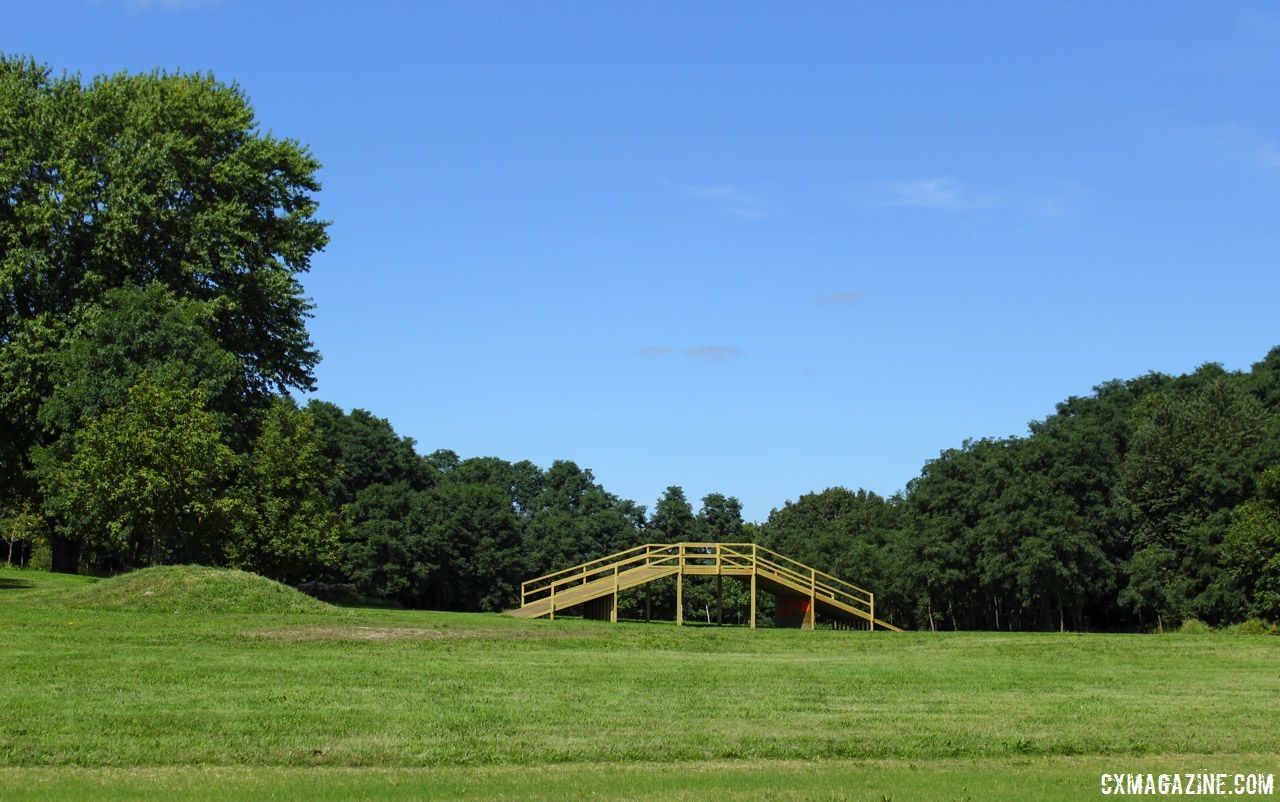
One of the new flyovers is located in the northeast part of the Trek property where the beer garden will be. 2018 World Cup Waterloo Course Preview © Z. Schuster / Cyclocross Magazine
According to Braun, it should be a popular location. “One of the things we did this year was move where the beer garden area is located,” Braun said. “To move the official party zone to an area that has a little bit easier access. You can get there with minimal course crossing. From that spot, you can see about five or six different race lines on the course. You’ll end up seeing about a quarter of the race from that spot. It’s also near the stairs and you can see a flyover from there.”
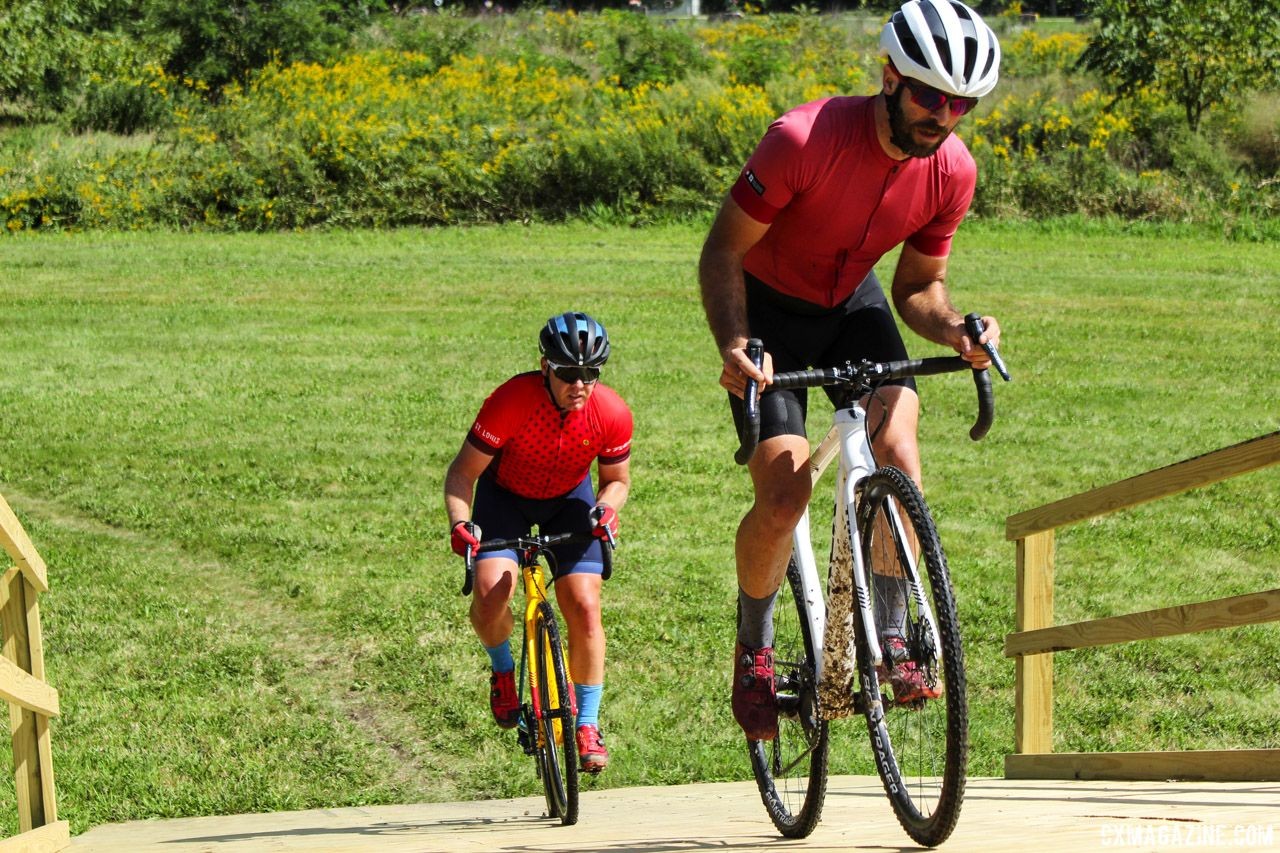
The new flyovers are not as steep as the original barn flyover that stands atop the Trek property ridge. 2018 World Cup Waterloo Course Preview © Z. Schuster / Cyclocross Magazine
Last year, the set of two small stairs played a decisive roll in Friday’s Women’s Trek CX Cup race when Sanne Cant crashed hard trying to ride the small feature.
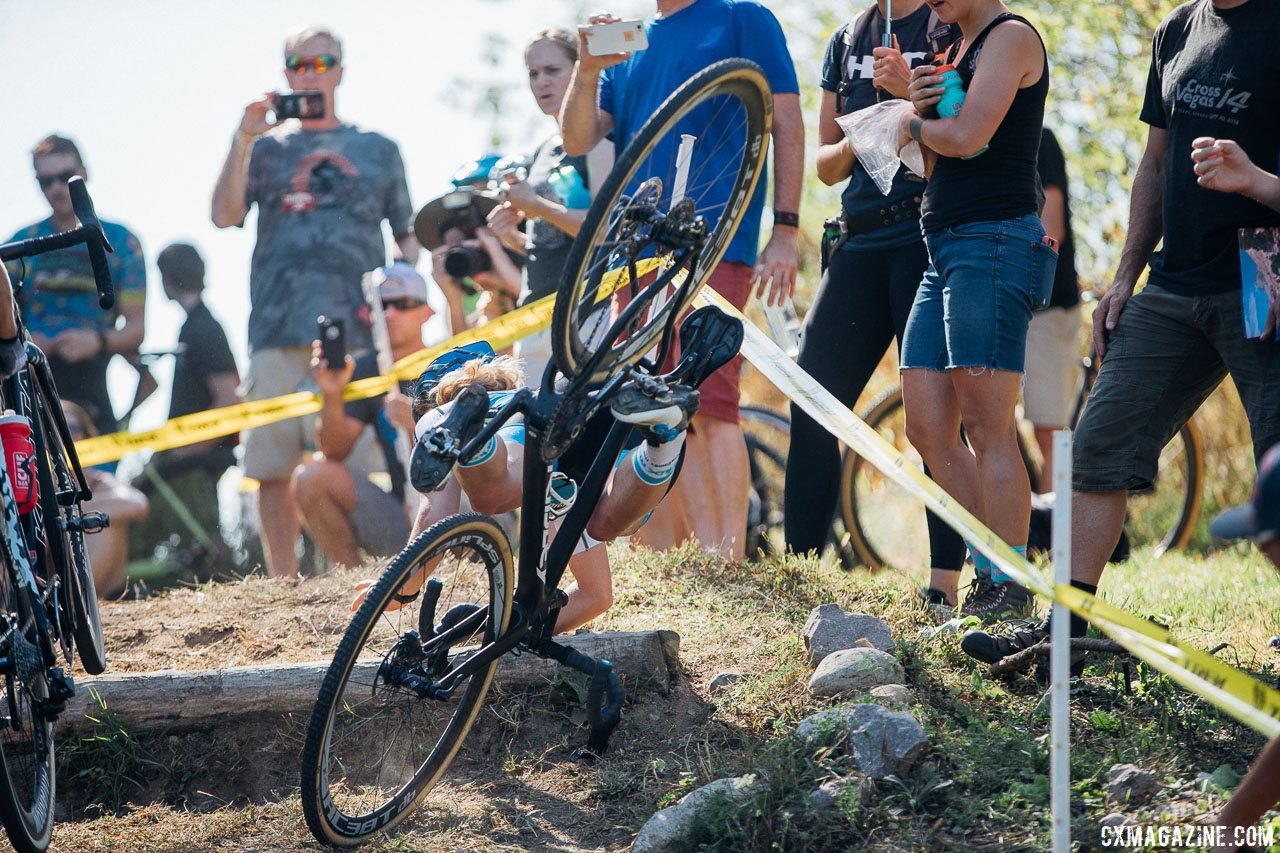
The stairs claimed some victims last year. 2017 Trek CX Cup, Friday UCI C2. © J. Curtes / Cyclocross Magazine
The stairs return, but this year, there are moar stairs.
Eight unevenly spaced logs make up the feature. “They’re not going to your so-called Belgian stairs that are evenly spaced and you can just pump your way up,” Braun said. “What we want is for it to seem doable but be a little different than it looks. It’s going to be a challenge to ride them.”
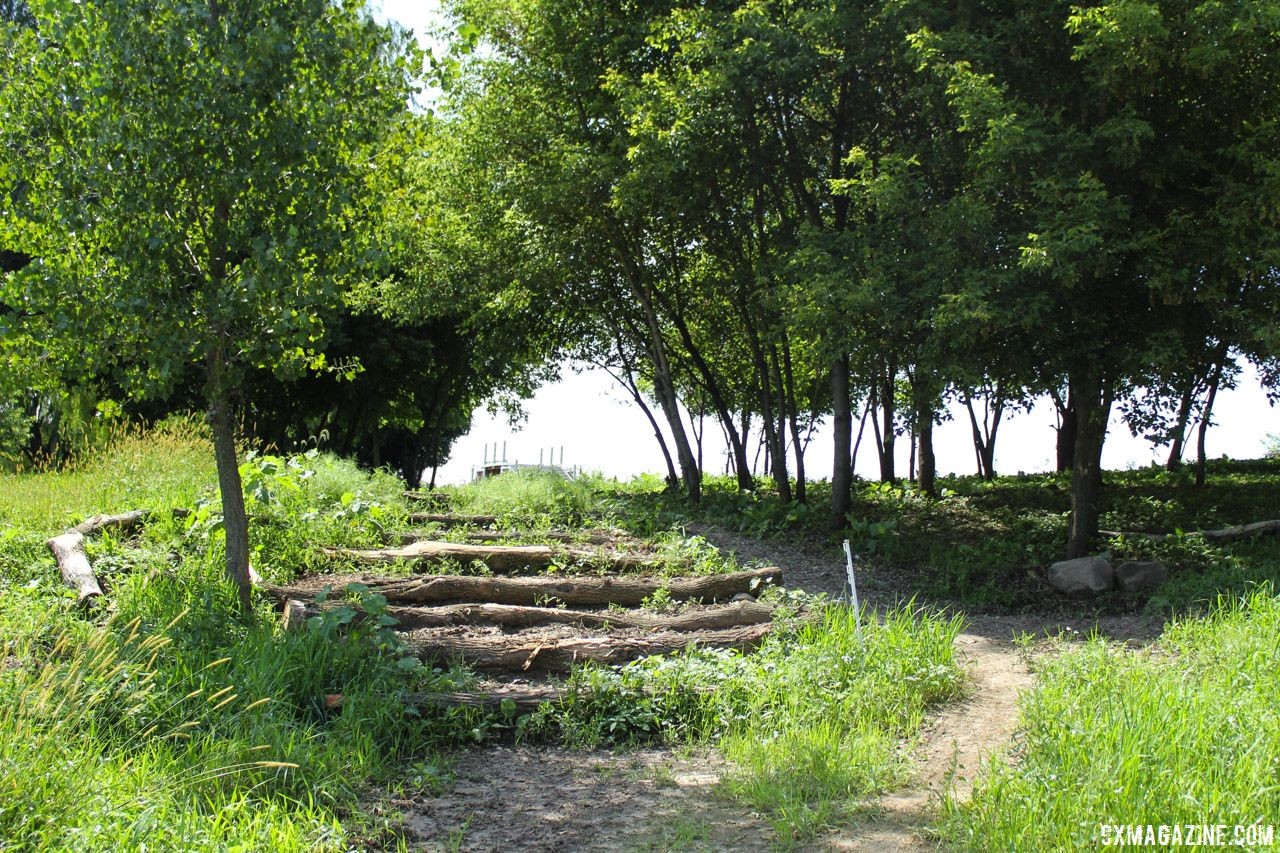
The logs were a popular spectating spot last year. The riding line to the right will not be open on race day. 2018 World Cup Waterloo Course Preview © Z. Schuster / Cyclocross Magazine
As we saw when Cody Kaiser wowed the crowd by riding the Belgian steps at the 2014 Cyclocross Nationals at Valmont Park in Boulder, stairs provide a chance for internet fame. At the same time, as Cant experienced last year, they can also be devastating if you biff your timing.
“I almost expect in the World Cup people who are going for results will play it a little safer and run them to avoid the big time suck of crashing, but people who are looking for more Instagram followers might try to ride them,” Braun said. “There’s going to be a lot of variations in screams from the crowd. There’s going to be a lot of ‘Ohhhhhh!’ [sic] and a lot ‘Ooooooofff.’ [sic]”
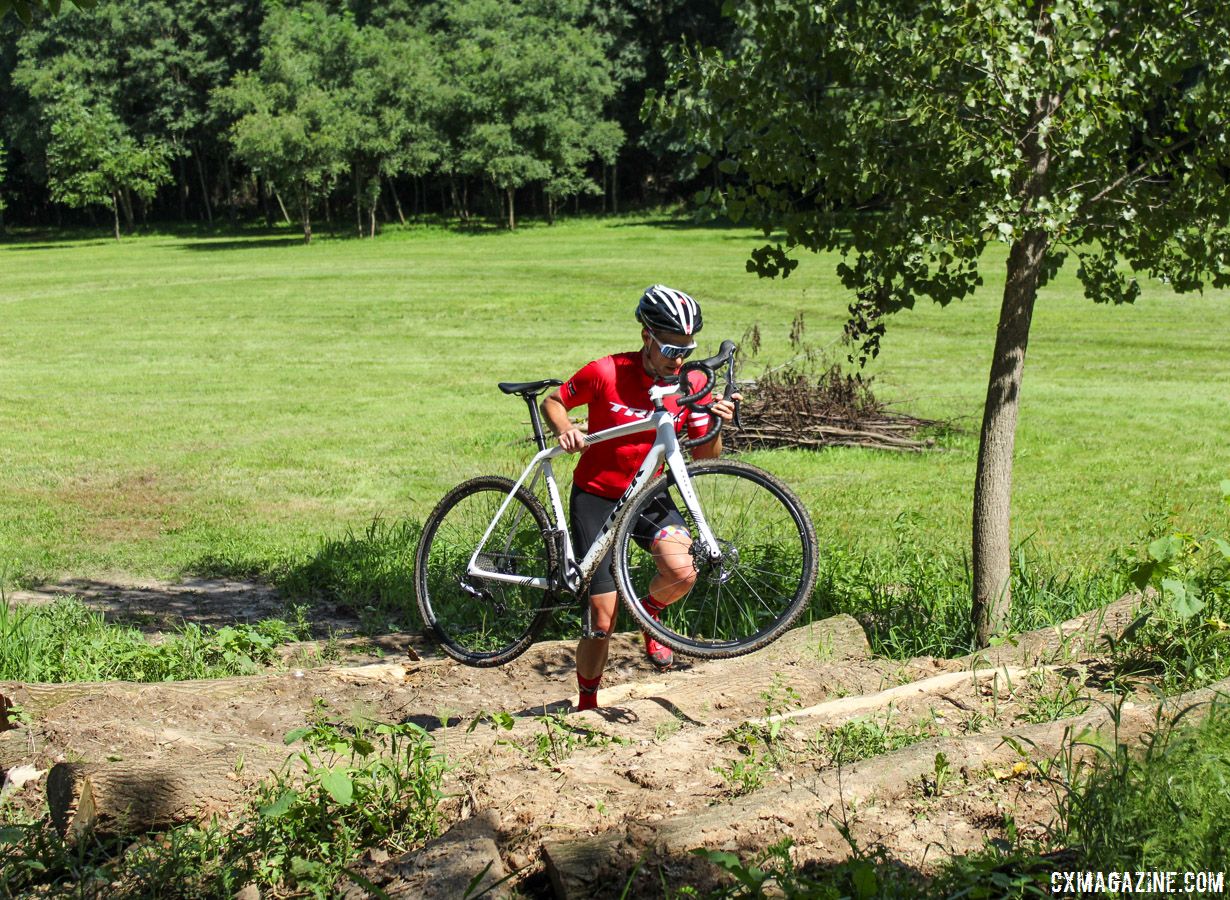
The stairs got longer and will be tougher to ride this year. 2018 World Cup Waterloo Course Preview © Z. Schuster / Cyclocross Magazine
What Returns This Year
The course design for 2018 is very similar to the course I previewed last year. And largely similar to the one I previewed in 2016. It’s an annual tradition!
Here’s an annotated map:
The Trek grounds feature the steep Trek Factory Hill in the southwest, a steep hill in the northwest near the factory loading dock (I guess we called it the “junkyard” last year?), woods in the north, a large ridge that runs north-south parallel to the factory and a large open field in the northeast near the woods they call “Little Zolder.”
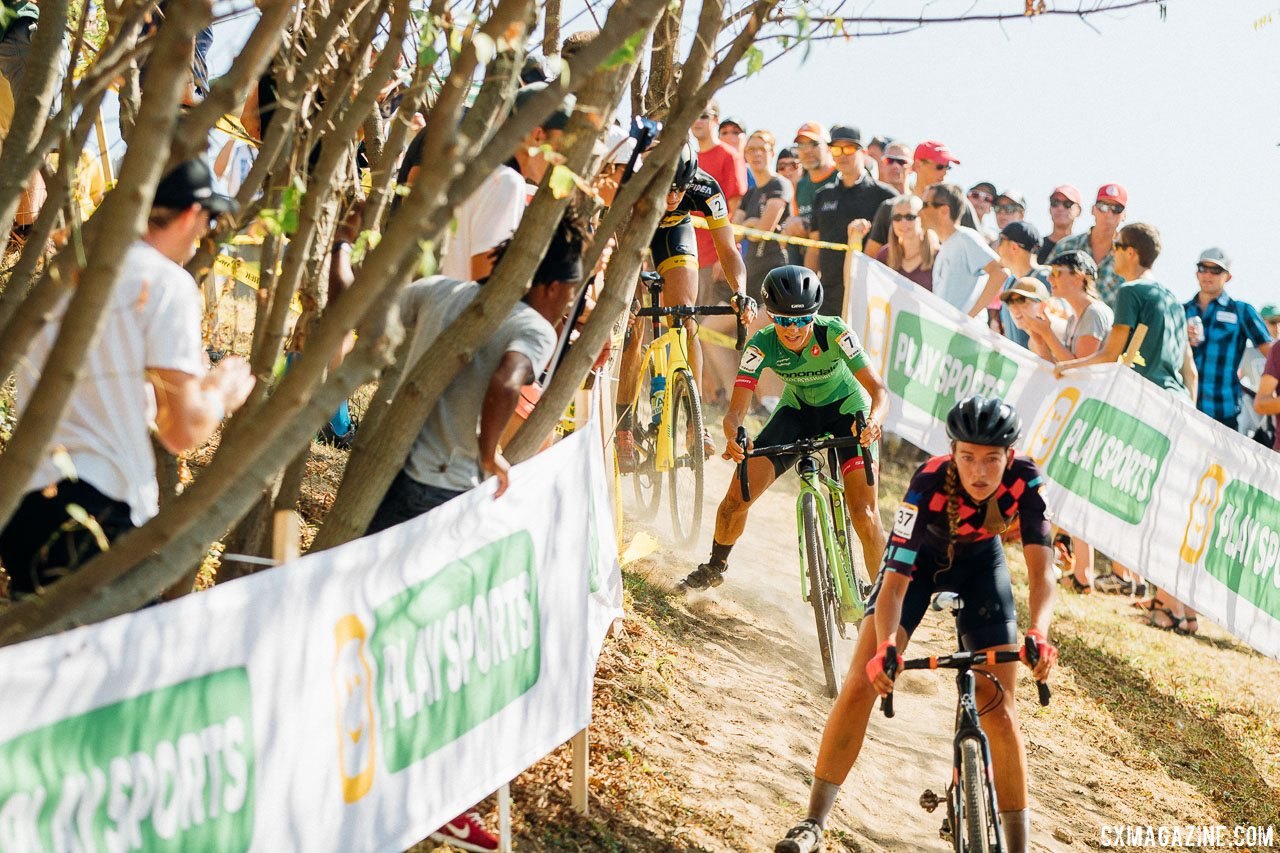
Last year’s course featured some technical descents. 2017 World Cup Waterloo © J. Curtes / Cyclocross Magazine
One of the challenges Braun and his team face with the grounds at Trek is the cyclocross course is crammed into a relatively small area of about 10 acres, and the venue does not necessarily have a Mt. Krumpit or a De Kuil, making it a challenge to put together a course with the much venerated “Oh shit” moment.
The course, does, however, have a number of features that challenge riders’ abilities. Trek Factory Hill features a tough incline to ride, the Segafredo Run-Up is rather steep, the stairs last year created a tempting risk-reward situation and the descents in the woods are technically challenging.
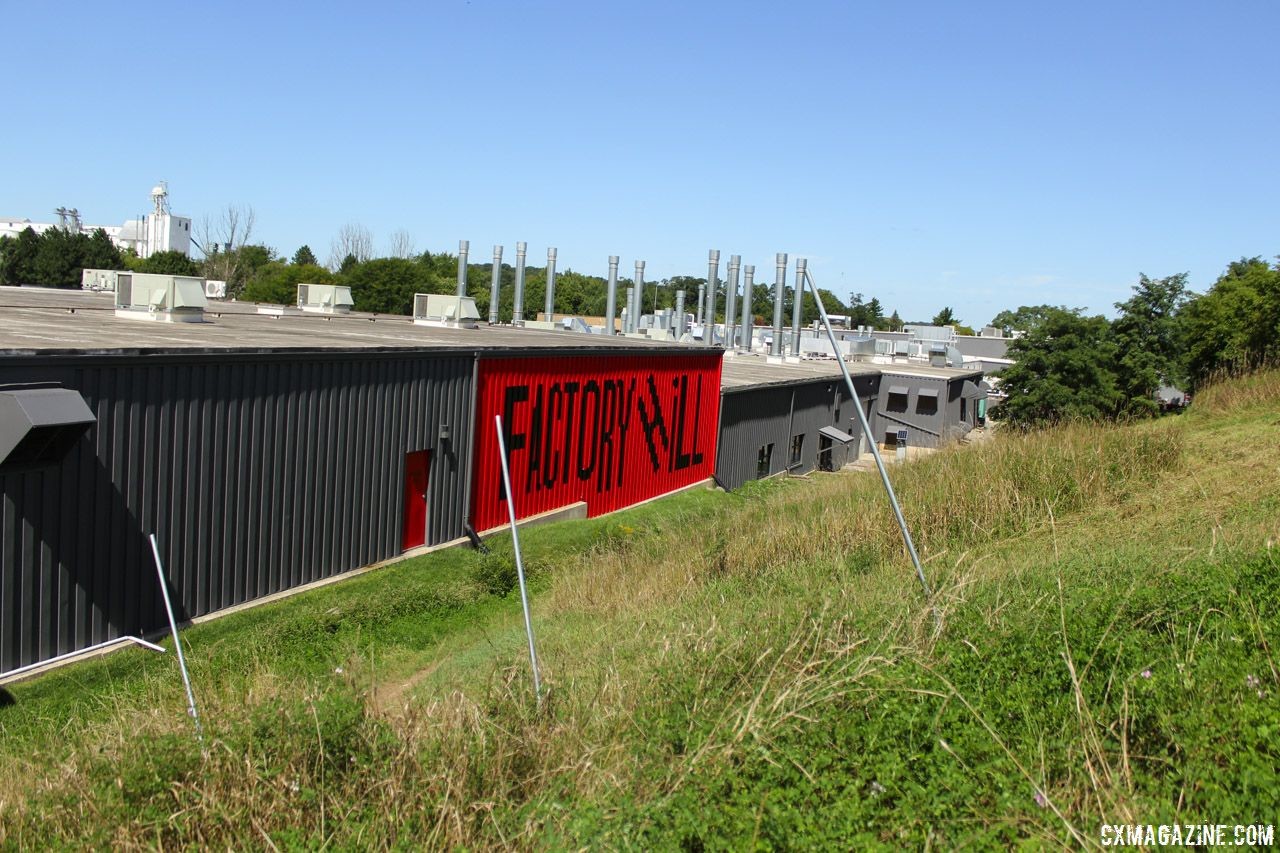
Trek Factory Hill is easy to find but still very steep to climb up. 2018 World Cup Waterloo Course Preview © Z. Schuster / Cyclocross Magazine
It had to be rewarding for Braun and his team that several of the features played a key role in the weekend’s racing. The stairs and their temptation of Instagram fame claimed Sanne Cant in Friday’s Trek CX Cup race, but the two-time world champion bounced back and made her winning move on Trek Factory Hill at World Cup Waterloo. Kaitie Keough made her second-place dash in Sunday’s World Cup on the Segafredo Run-Up as well.
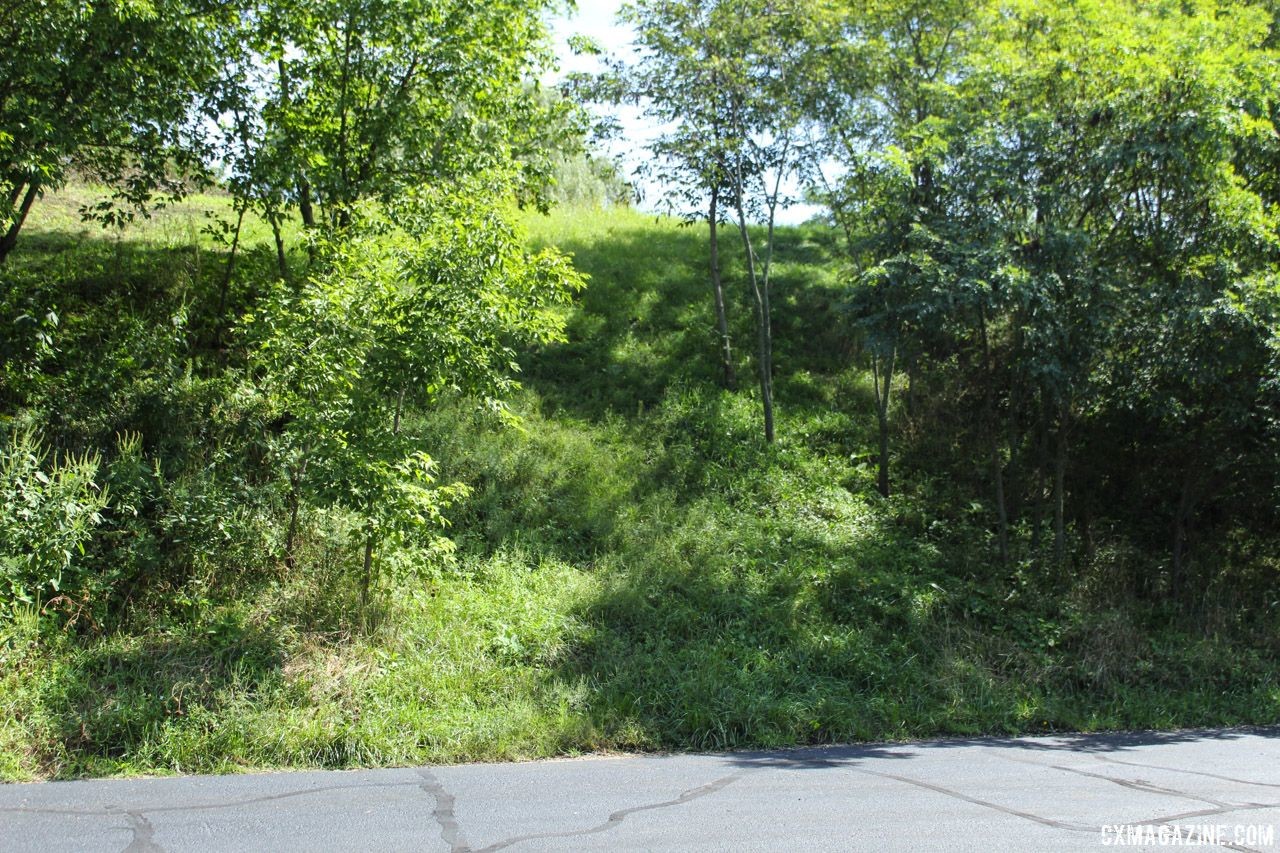
The Segafredo Run-Up is a little overgrown right now, but during the World Cup it will be a steep hill to climb. 2018 World Cup Waterloo Course Preview © Z. Schuster / Cyclocross Magazine
In past years, the Trek course has featured a lot of turns (“like a million,” according to Braun) because the course designers had to cram 2.5 to 3.5 km of cyclocross course into a small area. Braun said the previous course iterations played a role in last year’s design. “That was actually a goal last year, to see where we could make it be fast and actually flow a bit and make the straightaways seem longer than they were. We may have gone a little too far in that direction.”
He continued, “It might have flowed too well. That was the one bit of feedback we got. There wasn’t enough start, stop, which is tough because out there, we tried to take some of the start, stop out because it’s such a small area.”
This year’s course will likely follow in the footsteps of what Braun and his team built last year. “We mixed it up a little bit,” he said. “Still tried to keep some fast downhills, added more off-cambers because that’s fun. Just tried to turn up the fun knob a little bit.”
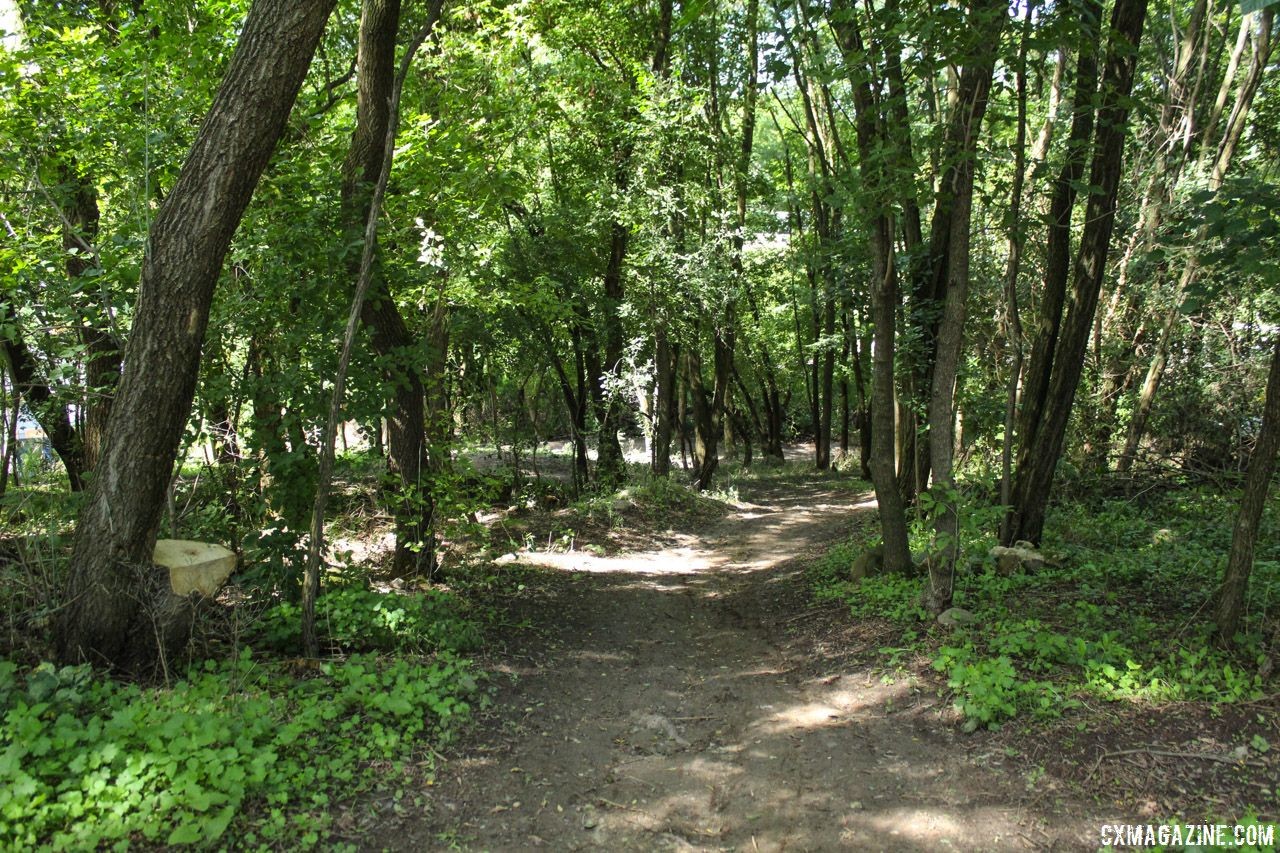
Savvy riders should be able to use the fast descents in the woods to gain time. 2018 World Cup Waterloo Course Preview © Z. Schuster / Cyclocross Magazine
Last, but of course not least, is the Secret Bar.
Literally the day before racing started last year, enterprising Trek employees headed into the woods on the north side of Trek’s property and built a small structure they coined “The Secret Bar.” It was on the far side of the course, you had to cross the course several times to get there, and yet it was the place to be during last year’s Trek weekend.
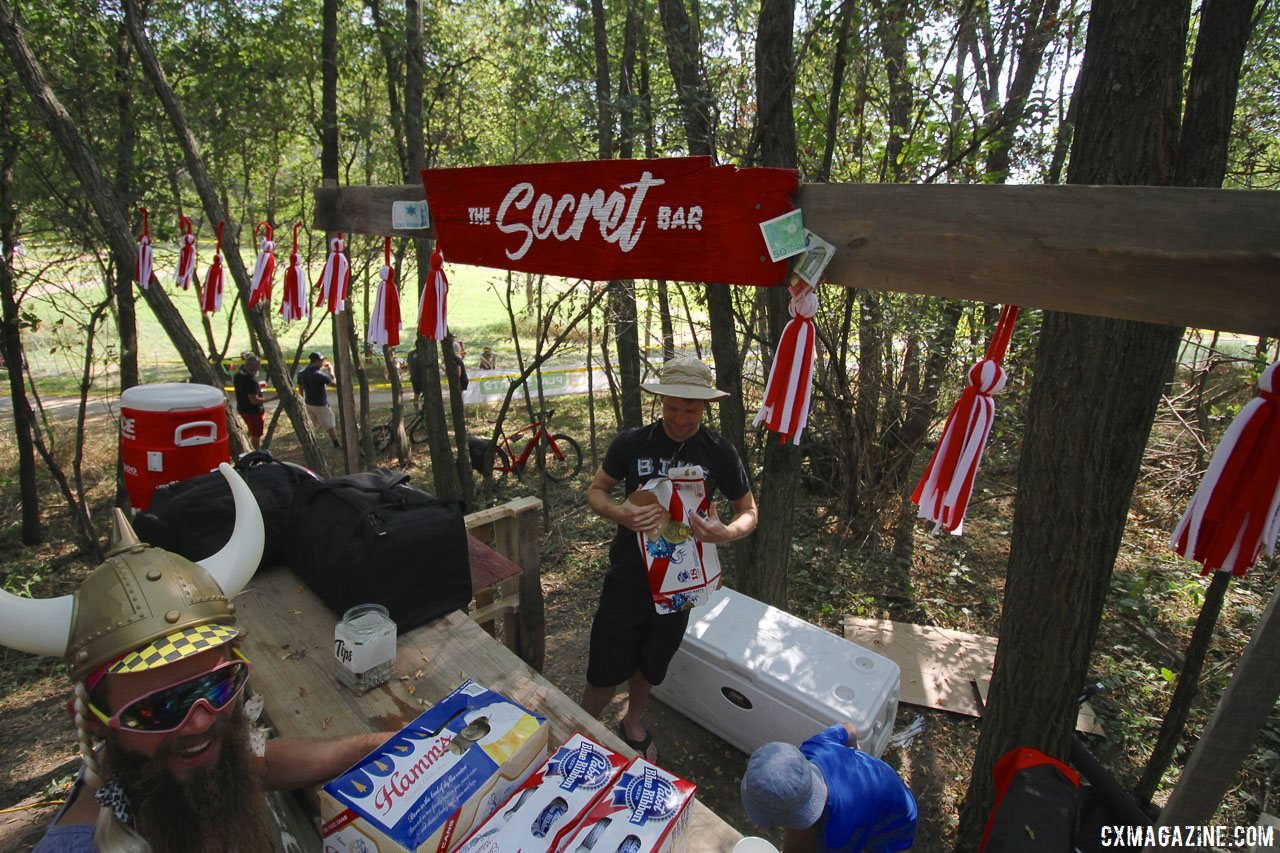
Despite being tucked far away from the expo area, the Secret Bar was a popular spot in Waterloo. 2017 World Cup Waterloo Legends Race. © D. Mable / Cyclocross Magazine
This year, the Secret Bar is reportedly back. Why, it’s even on the map!
The structure from last year’s Secret Bar still stands tall, and it got called into action during last December’s Wisconsin State Championships, but it remains to be seen where the Secret Bar will be located.
“The Secret Bar is definitely becoming more ironic as its legend grows,” Braun said. “We’re talking about it maybe being on the map now. It’s a very loud wink when you say ‘The Secret Bar’ now. There might be a little bit more of that flavor elsewhere on the course. That was certainly one of the highlights last year for spectators.”
You will probably just have to head to Waterloo to learn the secret of The Secret Bar.
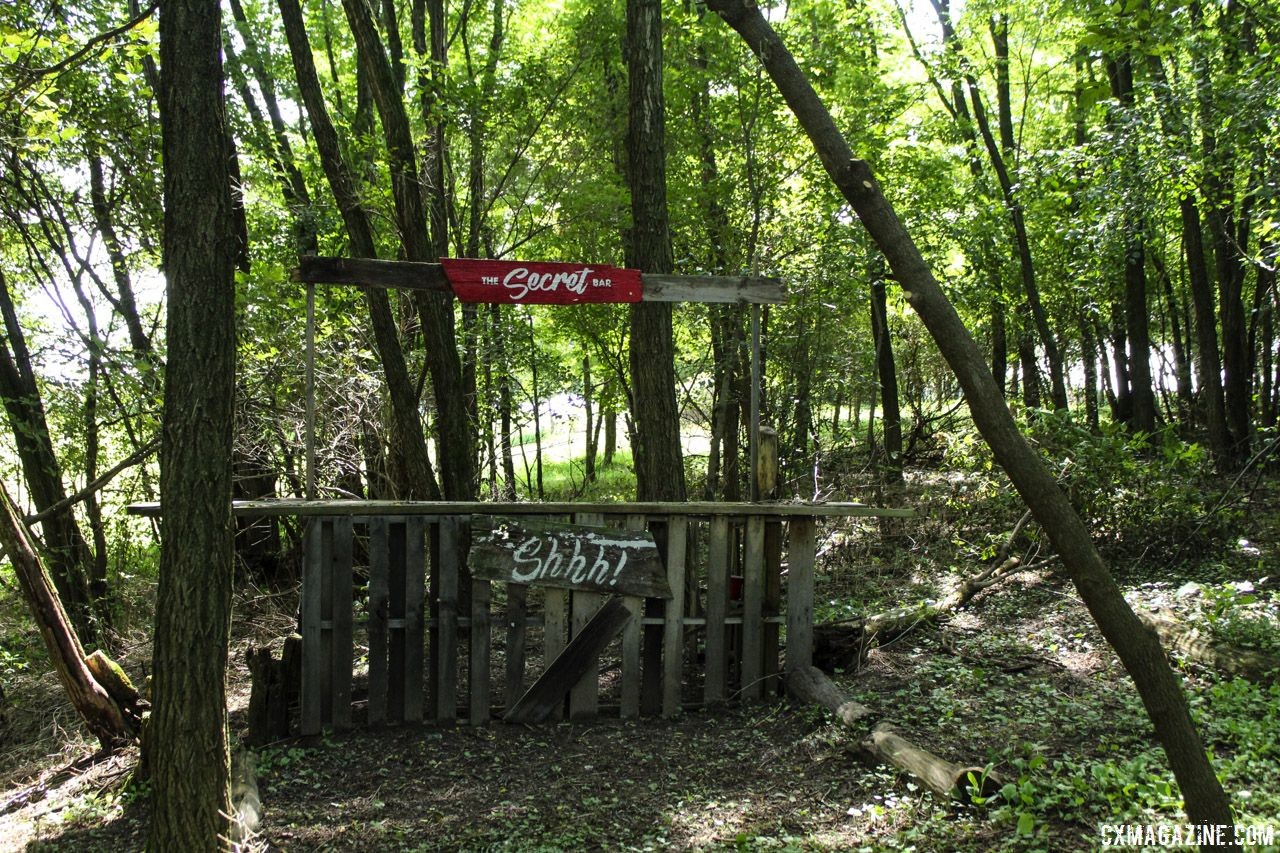
The 2017 Secret Bar structure still stands. The 2018 location might be … wait for it … a secret. 2018 World Cup Waterloo Course Preview © Z. Schuster / Cyclocross Magazine
The Weather
One of the few uncool things about last year’s World Cup Waterloo was the weather. Literally.
The high temperature during Sunday’s World Cup Waterloo was 92 degrees, and temperatures were above 85 degrees the entire three days of racing. Ice vests, ice packs and umbrellas were a common site for riders trying to stay cool before putting in a hard effort in the extreme heat.
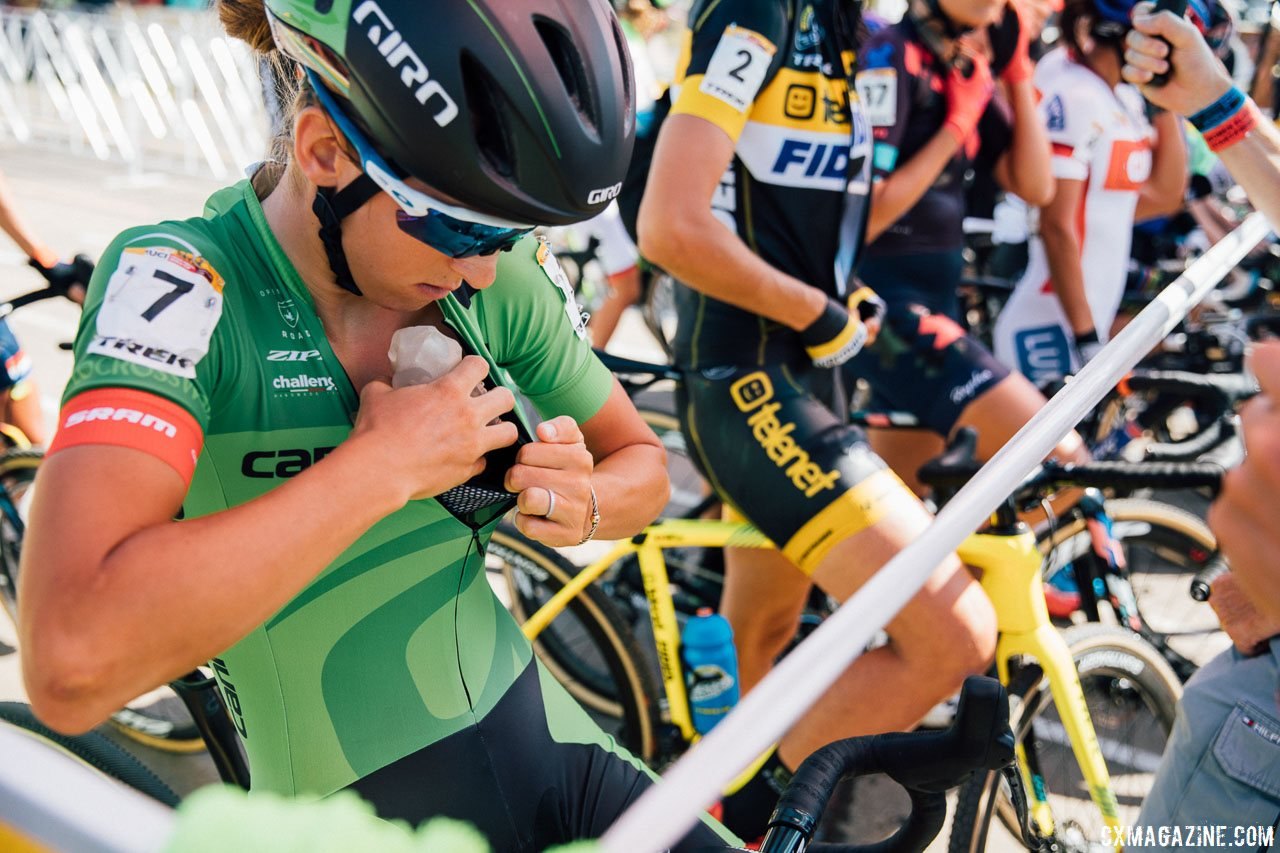
Athletes did whatever they could to stay cool last year. 2017 World Cup Waterloo © J. Curtes / Cyclocross Magazine
As of Monday, September 10, temperatures are projected to be in the 60s, making for very fall-like Wisconsin conditions. A lot can change between now and then, but for now, things are looking good.

2018 World Cup Waterloo forecast (as of 9/10)
If anything, conditions in South-Central Wisconsin have been incredibly wet. Madison has received a bonkers 11.6 inches of rain since August 15 (the average is about 4 inches per month this time of year) that has caused flooding on the lakes surrounding Madison’s isthmus about 20 miles west of Waterloo.
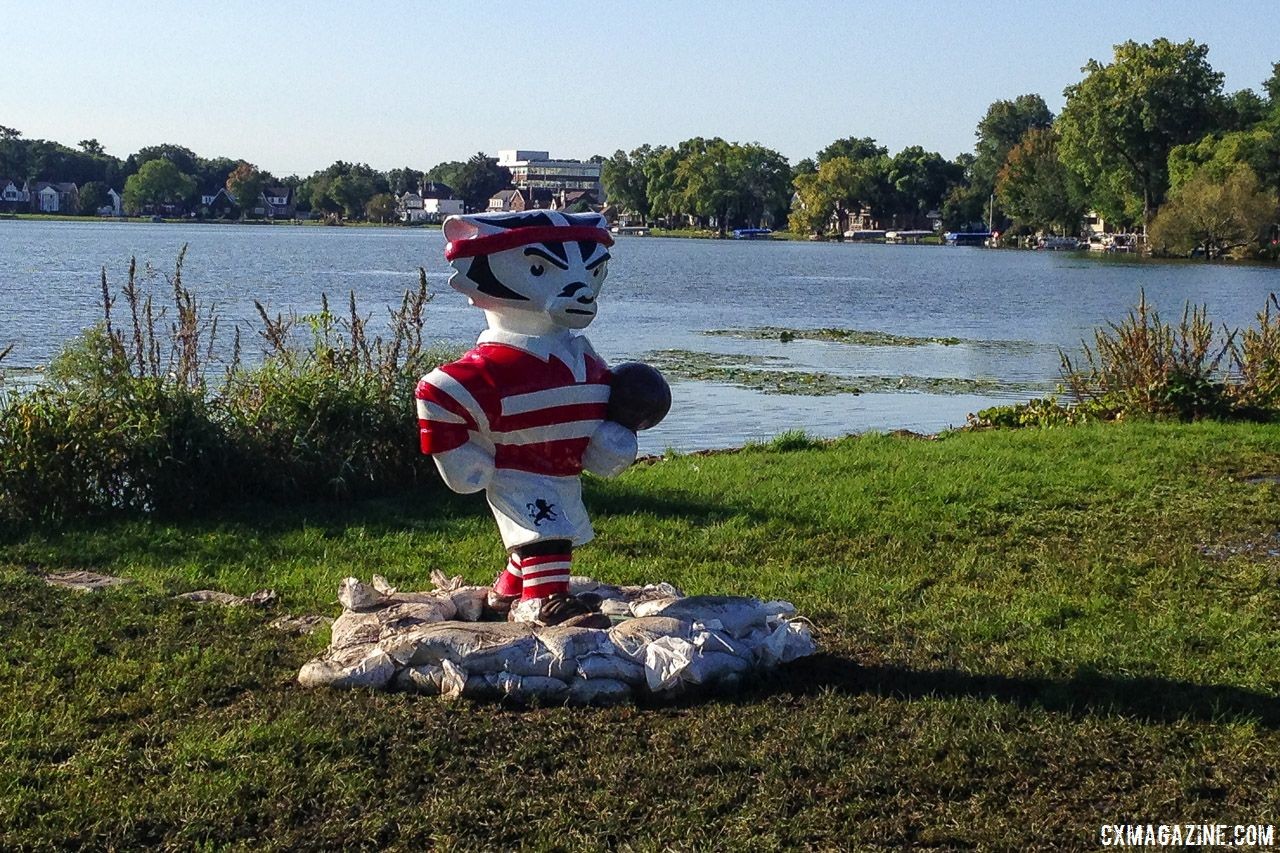
The flooding in Madison is so bad, even Bucky Badger had to be sandbagged. 2018 World Cup Waterloo Course Preview © Z. Schuster / Cyclocross Magazine
Waterloo has not flooded, but the course has still been very wet. The Trek folks said the wet ground has prevented them from doing some of their work on the course, but the last few days have been dry, allowing them to do work on the grounds. As I type this the forecast has changed since this morning and now some rain is creeping its way back into the weatherperson’s predictions.
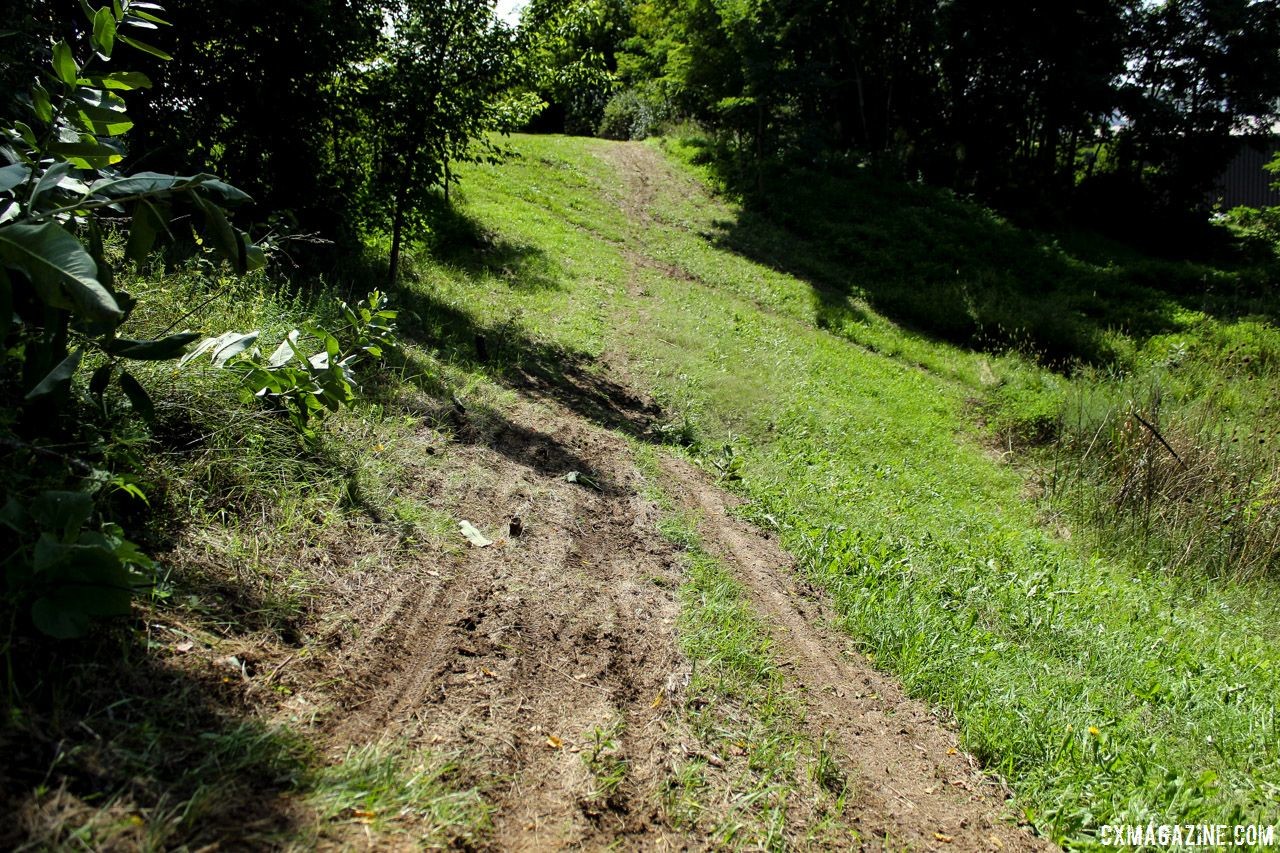
A little bit of mud showed up on the off-cambers when we were in Waterloo. The course at Trek has never seen a rainy race. 2018 World Cup Waterloo Course Preview © Z. Schuster / Cyclocross Magazine
During the first five years of racing at Trek Headquarters, there has never been rain. Most of the years, like last year, have been dry and dusty. With the fast descents and off-cambers on Trek Factory Hill and in the north woods, the Trek course will take on a much more difficult shape if the weather has a more Belgian flavor than what the ’cross gods have delivered in recent years.
Meet Me in Waterloo
The Trek CX Cup / World Cup Waterloo weekend starts on Thursday, September 20 when Skratch Labs is hosting a pre-ride party from 4 to 7 p.m CDT.
Racing starts on Friday with the Trek CX Cup UCI C2 races at 1:30 and 2:45 p.m. CDT.
Saturday is for amateur racing and the already legendary Lakefront Legends race with Sven Nys, Jens Voigt, Tim Johnson, the cow, Gary Fisher and who knows who else.
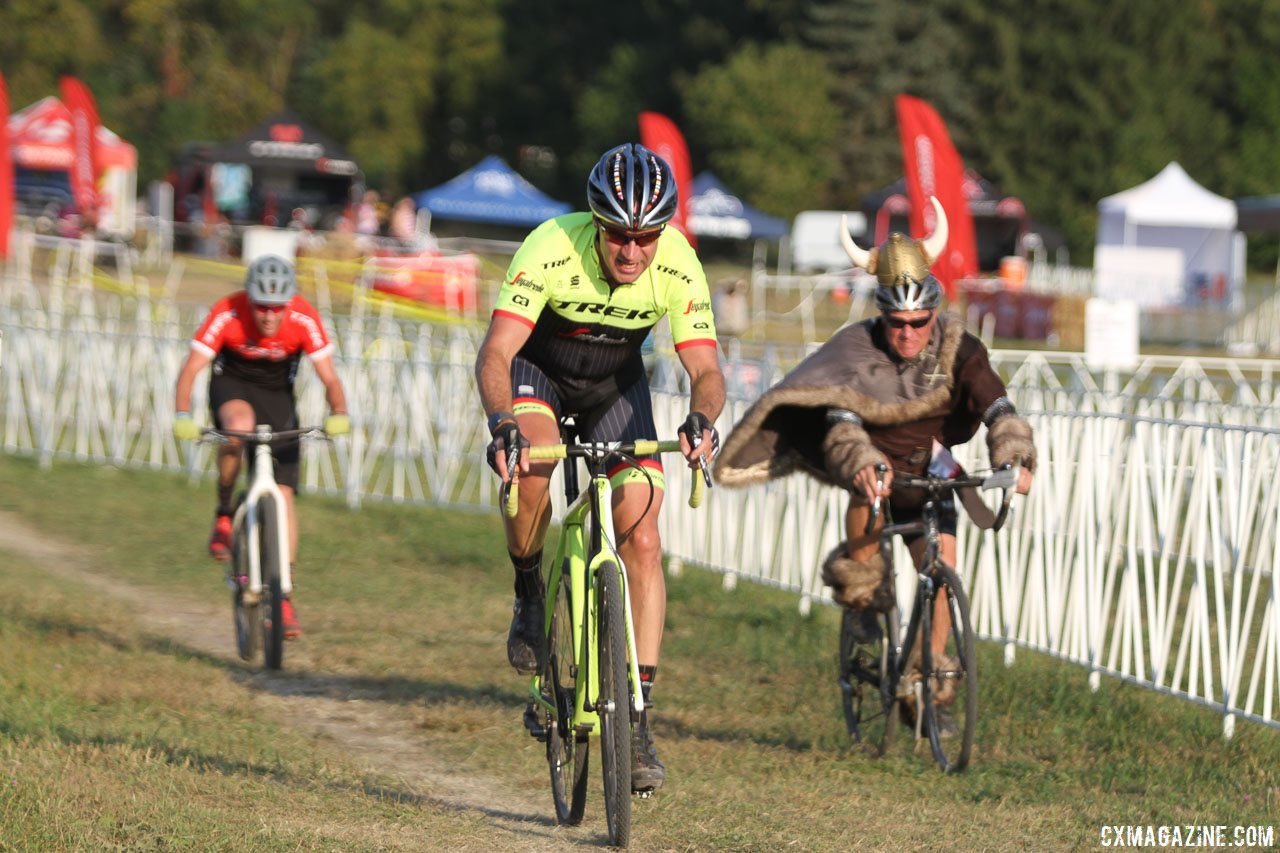
Jens Voigt let his legs do the shouting in the Legends race. 2017 World Cup Waterloo Legends Race. © D. Mable / Cyclocross Magazine
The main event is World Cup Waterloo on Sunday, September 23. The men race first at 1:30 p.m. and then the women race at 3:15 p.m in the marquee time slot.
Cyclocross Magazine will be in Waterloo all weekend to cover the Elite racing and hopefully film the much-anticipated follow-up to Dave Mable’s Name That Wisconsin Town video. Stay tuned.













